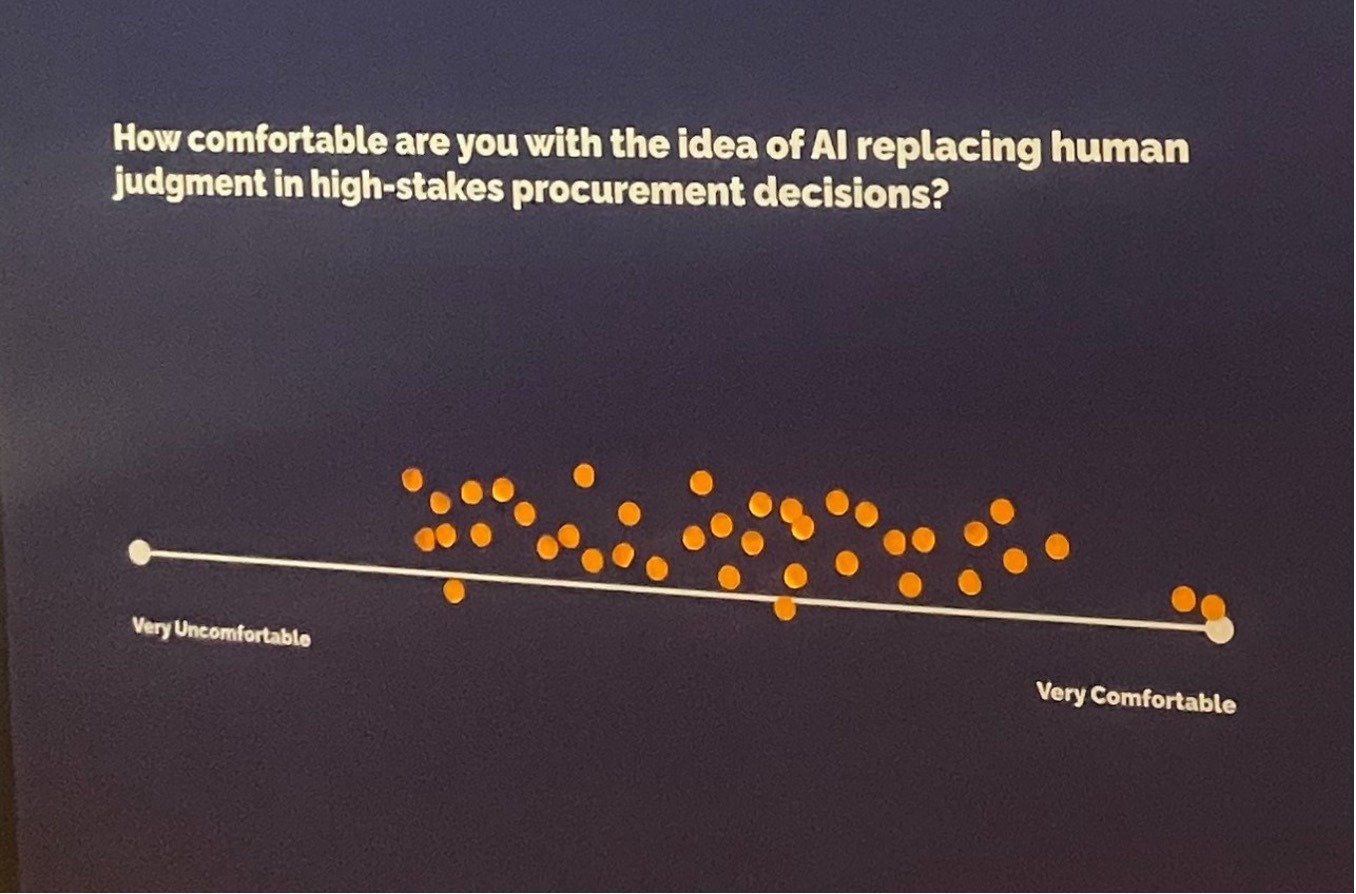Can You Have Too Much AI? The Risks of Unchecked Siloed Intelligence

Haider Al-Seaidy
Chief Customer Officer Customer Success
Are we sitting on AI hell without realizing it!
Can you ever have too much AI? I’d say the answer to that question is most probably yes…. if left unmanaged!
Demand for AI is at unprecedented levels with every business seeking to exploit the ability to do more with less and to offer an elevated level of service to their clients and stakeholders.
To stay relevant with rapidly moving times, software vendors are rushing to integrate Gen AI capabilities into their product offerings. Last week I attended DPW in Amsterdam, a major event for showcasing technology in Procurement and Supply Chain. I was able to spend time absorbing what many of the software vendors attending had to offer. It was clear that AI was very topical and positioned front and centre on most stands. I left the event with two overriding observations:
- There were many niche software vendors offering products for very targeted parts of the overall procurement and supply chain process.
- AI was very visible, regularly surfaced as a chat-bot type experience.
- What would the knock-on impact be for a customer who chooses to bring in a multitude of software solutions from different vendors, where each vendor offers their own AI?
- Why have many of the vendors chosen to make the AI so visible in their user experience and require so much user interaction?
Today, organizations of all sizes are maintaining large portfolios of operational business systems and applications from a multitude of vendors. It is surprisingly common to find literally hundreds of different applications deployed across any given business. Many of these applications may be relatively isolated from others and likely lack the necessary level of integration with other systems. Organizations have been grappling with siloed departments, siloed applications, and siloed data for decades now, and this is one of the primary obstacles towards implementing a more automated business.
As vendors now move towards introducing AI into their respective product offerings, as I witnessed at DPW this week, there is a risk that organizations find themselves in a situation where they have pockets of AI popping up across their business without a cohesive strategy in place to manage it all.
Many solutions will now have vendor-specific AI features introduced. Each AI may add value inside its own isolated scope, but is a situation brewing that means new unforeseen challenges are being introduced into businesses? If left unchecked, siloed AI may create significant headaches for businesses in the long run.
Some of the immediate questions that come to mind are: how hard would this be to manage? What knock-on effects would occur? How do these AI play nicely together? What is the hand-off between one AI to another? How do we ensure there is a consistent level of training across the models? How can we ensure a consistent level of compliance with so many variations of models being used by different vendors?
I have no doubt that siloed AI will become an additional headache unless businesses start to proactively consider their AI strategy. Increasing the complexity in an already complex landscape.
Moving onto the second point – many of the solutions we saw emphasised a chat-like experience for the user where AI was constantly prompting the user, and in return, the user was prompting the AI. This means the user needs to stay in the process longer, reducing the speed of automation.
The highly sceptical side of my brain concluded that some of the solutions were implemented in such a way to make it easier and more obvious to demonstrate to prospects that the vendor offered AI in their product.
I was hoping to see examples of how AI could operate under the radar, quietly getting on with its work in a diligent fashion, accelerating business processes by removing manual intervention without needing to poke business users on a constant basis for more information. AI shouldn’t be needy!!
In my view, the less obvious the implementation of the AI, the more valuable it likely will be. It seems to me that many of the vendors have gone for the flashy approach without really giving enough consideration into how the AI can be integrated seamlessly into a workflow or business process to help solve a business challenge.
As we walked into DPW Amsterdam, many people were asked to answer some questions by placing stickers onto a large board that displayed topical questions. I felt that the question and sticker positions below supported my sentiment overall; which is that AI will increasingly play a greater part in procurement. Overall, people accept it is here to stay, but few are ready to see it run completely autonomously. As confidence builds with existing implementations, the stickers will start to shift further to the right. It would be interesting to see where the stickers were positioned last year and where they will be one year from now!

Another school of thought I had was that we are on a journey with AI. Ultimately, AI will play an increasingly greater role in our day-to-day work lives. We may not be at a point where companies are happy for AI to work ‘automagically’ without a human in the loop – especially for things like negotiation. And so, as the technology matures, we will likely see greater automation and less need for human interaction in the process. This would justify the commonly seen chat like approach to implementing AI in the procurement space. Procurement decisions are important decisions to make, and so being guided to a negotiate a better deal makes sense as a first base to reach. From there, it was clear that vendors could see a pathway to increase the level of sophistication.
Find out more About Cyferd
New York
Americas Tower
1177 6th Avenue
5th Floor
New York
NY 10036
London
2nd Floor,
Berkeley Square House,
Berkeley Square,
London W1J 6BD
